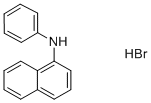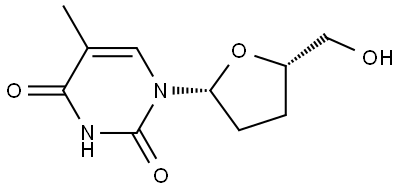Methylene Chloride
- CAS NO.:75-09-2
- Empirical Formula: CH2Cl2
- Molecular Weight: 84.927
- MDL number: MFCD03095386
- EINECS: 200-838-9
- SAFETY DATA SHEET (SDS)
- Update Date: 2023-05-04 17:34:42

What is Methylene Chloride?
Physical properties
A common synonym for methylene chloride is dichloromethane.
Methylene chloride is a colorless liquid with a sweetish odor.
The chemical formula for methylene chloride is CH2Cl2, and the molecular weight is 84.93 g/mol.
The vapor pressure for methylene chloride is 349 mmHg at 20 °C, and it has an octanol/water coefficient (log K ow ) of 1.30.
Methylene chloride has an odor threshold of 250 parts per million (ppm).
Methylene chloride is slightly soluble in water and is nonflammable.
The Uses of Methylene Chloride
Methylene chloride is predominantly used as a solvent in paint strippers and removers; as a process solvent in the manufacture of drugs, pharmaceuticals, and film coatings; as a metal cleaning and finishing solvent in electronics manufacturing; and as an agent in urethane foam blowing.
Methylene chloride is also used as a propellant in aerosols for products such as paints, automotive products, and insect sprays.
It is used as an extraction solvent for spice oleoresins, hops, and for the removal of caffeine from coffee. However, due to concern over residual solvent, most decaffeinators no longer use methylene chloride.
Methylene chloride is also approved for use as a postharvest fumigant for grains and strawberries and as a degreening agent for citrus fruit.
Preparation
Methylene Chloride was first prepared by Regnault in 1840 by the chlorination of methyl chloride in sunlight. It became an industrial chemical of importance during the Second World War. Two commercial processes are currently used for the production of Methylene Chloride—hydrochlorination of methanol and direct chlorination of methane (Rossberg et al., 1986; Holbrook, 1993).
The predominant method of manufacturing Methylene Chloride uses as a first step the reaction of hydrogen chloride and methanol to give methyl chloride. Excess methyl chloride is then mixed with chlorine and reacts to give Methylene Chloride, with chloroform and carbon tetrachloride as co-products. This reaction is usually carried out in the gas phase thermally but can also be performed catalytically or photolytically. At low temperature and high pressure, the liquid-phase process is capable of giving high selectivity for Methylene Chloride (Rossberg et al., 1986; Holbrook, 1993).
The older and currently less used production method for Methylene Chloride involves direct reaction of excess methane with chlorine at high temperatures (400–500°C), or at somewhat lower temperatures either catalytically or photolytically. Methyl chloride, chloroform and carbon tetrachloride are also produced as co-products (Rossberg et al., 1986; Holbrook, 1993).
World production of Methylene Chloride increased from 93 thousand tonnes in 1960 to an estimated 570 thousand tonnes in 1980 (Edwards et al., 1982) and is believed to be still several hundred thousand tonnes. Production in the United States has shown a steady decline from 1981 to 1993, as shown by the following figures (thousand tonnes): 1981, 404; 1984, 275; 1987, 234; 1990, 209; 1993, 160 (Anon., 1994, 1997). The total amount produced in western Europe ranged from 331 500 tonnes in 1986 to 254 200 tonnes in 1991 (WHO, 1996).
Definition
ChEBI: Dichloromethane is a member of the class of chloromethanes that is methane in which two of the hydrogens have been replaced by chlorine. A dense, non-flammible colourless liquid at room temperature (b.p. 40℃, d = 1.33) which is immiscible with water, it is widely used as a solvent, a paint stripper, and for the removal of caffeine from coffee and tea. It has a role as a polar aprotic solvent, a carcinogenic agent and a refrigerant. It is a member of chloromethanes and a volatile organic compound.
Health Hazard
Methylene chloride is predominantly used as a solvent. The acute (short-term) effects of methylene chloride inhalation in humans consist mainly of nervous system effects including decreased visual, auditory, and motor functions, but these effects are reversible once exposure ceases. The effects of chronic (long-term) exposure to methylene chloride suggest that the central nervous system (CNS) is a potential target in humans and animals. Human data are inconclusive regarding methylene chloride and cancer. Animal studies have shown increases in liver and lung cancer and benign mammary gland tumors following the inhalation of methylene chloride.
Chemical Reactivity
Reacts vigorously with active metals (lithium, sodium, potassium) and with strong bases (potassium tert-butoxide) (Sax, 1984)
Industrial uses
Methylene chloride has been suggested, and indeed is already in commercial use, as a substitute for chlorofluorocarbon auxiliary blowing agents. Methylene chloride is highly volatile (boiling point 39.8°C) and inert in polyurethane-forming mixtures. However, methylene chloride is a suspected carcinogen and has other deleterious effects on workers exposed to it. Accordingly, the concentration of methylene chloride in the air inside a foam plant must be kept low. The American Conference of Governmental Industrial Hygienists recommends that workers not be exposed to more than 50 ppm of the chemical, while the Occupational Safety and Health Administration’s Permissible Exposure Limit is 500 ppm. Keeping the levels of methylene chloride in a foam plant below 50 ppm may require additional ventilation equipment, with an associated increase in costs. In addition, the chemical is a recognized environmental pollutant, and both the federal and state governments are beginning to limit releases of the chemical from plants that employ it. Thus, in the near future, plants using methylene chloride as an auxiliary blowing agent may be faced with the substantial additional expense of installing scrubbers or similar equipment to remove methylene chloride from air and/or other gases discharged from the plant. In addition, California has recently proposed that emissions of methylene chloride in that state be subject to a heavy “pollution” tax, and other states are likely to follow a similar course.
Potential Exposure
The principal route of human exposure to methylene chloride is inhalation of ambient air.
Occupational and consumer exposure to methylene chloride in indoor air may be much higher, especially from spray painting or other aerosol uses. People who work in these places can breathe in the chemical or it may come in contact with the skin.
Methylene chloride has been detected in both surface water and groundwater samples taken at hazardous waste sites and in drinking water at very low concentrations.
Storage
Prior to working with Methylene Chloride you should be trained on its proper handling and storage.
A regulated, marked area should be established where Methylene Chloride is handled, used or stored as required by the OSHA Methylene Chloride Standard (29 CFR 1910.1052).
Methylene Chloride reacts violently With OXIDIZING AGENTS(such as PERCHLORATES, PEROXIDES PERMANGANATES CHLORATES NITRATES CHLORINE, BROMINE and FLUORINE CHEMICALLY ACTIVE METALS (such as POTASSIUM, SODIUM MAGNESIUM and ALUMINUM) and STRONG BASES(such as SODIUM HYDROXIDE and POTASSIUM HYDROXIDE).
Methylene Chloride is not compatible with liquid oxygen;Titanium and Amines.
Store in tightly closed containers in a cool, well-ventilated area away from Metals and Ligh.
Methylene Chloride attacks some forms OFPLASTIC RUBBER and COATINGS and will corrode iron. some STAINLESS STEELS COPPER and NICKEL in the presence of WATER.
Properties of Methylene Chloride
| Melting point: | −97 °C(lit.) |
| Boiling point: | 39.8-40 °C mm Hg(lit.) |
| Density | 1.325 g/mL at 25 °C(lit.) |
| vapor density | 2.9 (vs air) |
| vapor pressure | 24.45 psi ( 55 °C) |
| refractive index | n |
| solubility | Slightly soluble (1.38 g/100 mL) in water at 20°C; soluble in carbon tetrachloride; miscible in ethanol, diethyl ether and dimethylformamide (Lide, 1995; Budavari, 1996) |
| form | Liquid |
| color | Colorless to yellow |
| Relative polarity | 0.309 |
| Odor | penetrating ether-like odour |
| Odor Threshold | The odour threshold of dichloromethane is about 200 ppm [694 mg/m3] (Stahl,1973). |
| Stability: | Vapour is nonflammable and is not explosive when mixed with air (Budavari, 1996) but may form explosive mixtures in atmospheres with higher oxygen content (Sax, 1984) |
Safety information for Methylene Chloride
| Signal word | Warning |
| Pictogram(s) |
 Exclamation Mark Irritant GHS07  Health Hazard GHS08 |
| GHS Hazard Statements |
H315:Skin corrosion/irritation H319:Serious eye damage/eye irritation H336:Specific target organ toxicity,single exposure; Narcotic effects H351:Carcinogenicity |
| Precautionary Statement Codes |
P201:Obtain special instructions before use. P302+P352:IF ON SKIN: wash with plenty of soap and water. P305+P351+P338:IF IN EYES: Rinse cautiously with water for several minutes. Remove contact lenses, if present and easy to do. Continuerinsing. P308+P313:IF exposed or concerned: Get medical advice/attention. |
Computed Descriptors for Methylene Chloride
New Products
4,4-Difluoropiperidine hydrochloride tert-butyl 9-methoxy-3-azaspiro[5.5]undecane-3-carboxylate Indole Methyl Resin N-Isopropylurea N,N-Dicyclohexylcarbodiimide(DCC) MELDRUMS ACID 5-METHYLISOXAZOLE-4-CARBOXYLIC ACID Magnessium Bis glycinate Zinc ascorbate 1-bromo-2-butyne 2-acetamidophenol 9(10H)-anthracenone Erythrosin B, 4-Piperidinopiperidine 2-((4-morpholinophenylamino) (methylthio) methylene) malononitrile 2,4-dihydroxybenzaldehyde 3-(4-morpholinophenylamino)-5-amino-1H-pyrazole-4-carbonitrile Methyl 2-methylquinoline-6-carboxylate 2,6-dichloro-4-nitropyridine 4-Bromo-2-chlorobenzonitrile 2-(benzylamino)acetic acid hydrochloride 4-(tert-Butoxycarbonylamino)but- 2-ynoic acid 3,4-dihydro-2H-benzo[b][1,4]dioxepine 1-Phenyl-1-cycloprppanecarboxylicacidRelated products of tetrahydrofuran








You may like
-
 3-(4-amino-1-oxoisoindolin-2-yl)-1-methylpiperidine-2,6-dione 98%View Details
3-(4-amino-1-oxoisoindolin-2-yl)-1-methylpiperidine-2,6-dione 98%View Details -
 1-methylindoline-2,3-dione 98%View Details
1-methylindoline-2,3-dione 98%View Details
2058-74-4 -
 614-19-7 98%View Details
614-19-7 98%View Details
614-19-7 -
 3112-85-4 Methyl phenyl sulfone 98%View Details
3112-85-4 Methyl phenyl sulfone 98%View Details
3112-85-4 -
 20677-73-0 (2,2-diethoxyethyl)methylamine 98%View Details
20677-73-0 (2,2-diethoxyethyl)methylamine 98%View Details
20677-73-0 -
 3-(4-(hydroxyamino)-1-oxoisoindolin-2-yl)piperidine-2,6-dione 98%View Details
3-(4-(hydroxyamino)-1-oxoisoindolin-2-yl)piperidine-2,6-dione 98%View Details -
 57381-49-4 2-bromo-4-chlorobenzonitrile 98%View Details
57381-49-4 2-bromo-4-chlorobenzonitrile 98%View Details
57381-49-4 -
 4,6-dichloropyrimidine-5-carbaldehyde 98%View Details
4,6-dichloropyrimidine-5-carbaldehyde 98%View Details
5305-40-8
